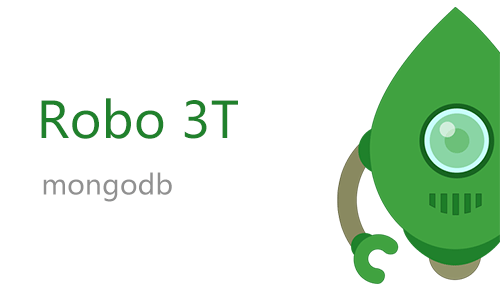

- #Robo 3t tutorial install#
- #Robo 3t tutorial code#
- #Robo 3t tutorial license#
- #Robo 3t tutorial download#
#Robo 3t tutorial code#
The last release of Robo 3T is version 1.4.4, downloadable from the following links:Īnd the source code from Robo 3T repository. Read more about the changes on the Robo 3T Blog. Studio 3T recommends users looking for a MongoDB GUI client try Studio 3T Free, a free-forever edition of the Studio 3T tools. Enjoy.Robo 3T is no longer being developed by Studio 3T. You can now manage your MongoDB from from Robo 3T gui as you would from command line. You can right click on the database, the database collections, the database functions and the database users to view more functionalities that can be accessed from Robo 3T.

Upon successful authentication, you will land on Robo 3T user interface with your databases and collections displayed on the left panel. You will first be prompted to enter SSH credentials. If all is well, save the connection and click connect to login to MongoDB database. Next, click the Test button to test the connection to the MongoDB database. Under SSH tab, check Use SSH tunnel and configure the server SSH login details. To connect to a MongoDB database, click Create to create a new database connection.Ī database connection settings then opens up where you can define the name of the connection, the MongoDB connection Address.Ĭlick Authentication tab and set the database name and the login credentials. When you press Finish, Robo 3T GUI opens up.
#Robo 3t tutorial license#
Once logged in, launch Robo 3T robomongoĪccept End User License Agreement and press Next to proceed. If you are using an headless server, you can SSH to your MongoDB server with X forwarding enabled. In this guide, Robo 3t is symlinked as robomongo in our guide. Hence, to verify access using MongoDB locally, simply, in your desktop based CentOS 8, open the terminal and launch Robo 3T as non privileged user. If you were used to Robomongo, you can as well choose symlink to Robo 3T to robomongo by running the command ln -s /opt/robomongo/bin/robo3t /usr/local/bin/robomongo Testing MongoDB Access using Robo 3Tīy default, MongoDB allows local access only. To be able to run Robo 3T binary on your PATH, create a symbolic link of Robo 3T on binary as shown below ln -s /opt/robomongo/bin/robo3t /usr/local/bin/robo3t The Robo 3T executable binary is located under the bin directory. ls /opt/robomongo/ bin CHANGELOG COPYRIGHT DESCRIPTION include lib LICENSE You can list the contents of the Robomongo directory. tar xzf robo3t-1.3.1-linux-x86_ -C /opt/robomongo -strip-components=1 Next, extract Robo 3T to the directory created above.
#Robo 3t tutorial download#
Once the download is complete, you need to extract the Robo 3T (Robomongo) binary.Ĭreate a directory under /opt directory to store Robomongo binary and libraries.
#Robo 3t tutorial install#
and can be downloaded as wget Extract and Install Robo 3T binary To install the latest release version of Robo 3T, download the binary tarball from the Robo 3T downloads. Install MongoDB 4 on Fedora 30/29/CentOS 7 Install Robo 3T MongoDB GUI Tool on CentOS 8 Download Robo 3T for Linux Install MongoDB Community Edition on CentOS 8


 0 kommentar(er)
0 kommentar(er)
